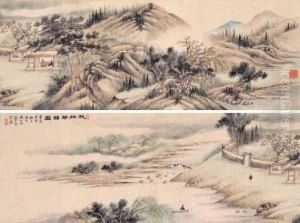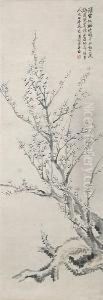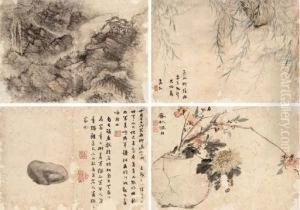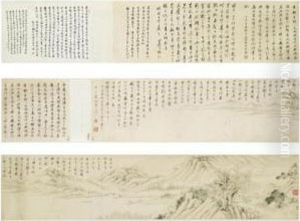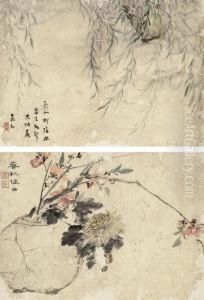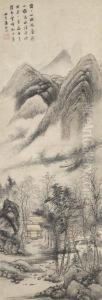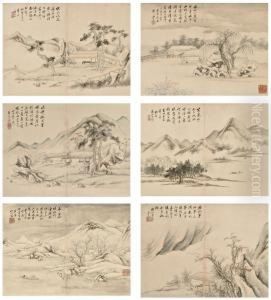Tang Yifen Paintings
Tang Yifen, born in 1778 and died in 1853, was a prominent Chinese painter, calligrapher, and poet during the Qing Dynasty. His contributions to the fields of art and literature have been significant, with his work deeply rooted in the rich traditions of Chinese culture, yet displaying distinctive personal innovations.
Tang was born into an era where the literati culture, emphasizing scholarly pursuits and artistic accomplishments, was highly valued. He embraced this culture wholeheartedly, dedicating his life to mastering the arts of painting and calligraphy, as well as poetry. His artistic style was characterized by its elegance and refinement, often reflecting the tranquil beauty of nature and the serene landscapes of his homeland. Tang's paintings frequently depicted mountains, rivers, and forests, executed with a delicate touch and a profound sense of harmony and balance.
As a calligrapher, Tang Yifen was known for his fluid and expressive brushwork, which captured the essence of what he saw and felt with great sensitivity and precision. His calligraphy was not merely a form of aesthetic expression but also a medium through which he conveyed his philosophical and literary insights.
In addition to his artistic achievements, Tang Yifen was an accomplished poet. His poetry, like his paintings and calligraphy, was imbued with a deep appreciation for nature and a contemplative, introspective quality. Through his poetry, Tang explored themes of solitude, the passage of time, and the relationship between man and the natural world.
Despite his considerable talents and contributions, Tang Yifen lived during a period of significant social and political upheaval in China. The late Qing Dynasty was marked by internal strife and external pressures, which inevitably influenced the cultural and artistic landscape of the time. Nevertheless, Tang's work remains a testament to the enduring spirit of Chinese literati culture and its capacity for introspection, resilience, and beauty amidst change.
Today, Tang Yifen is remembered as one of the Qing Dynasty's most distinguished artists, whose legacy continues to inspire and influence. His work is celebrated not only for its aesthetic qualities but also for its embodiment of the values and ideals of traditional Chinese culture.
